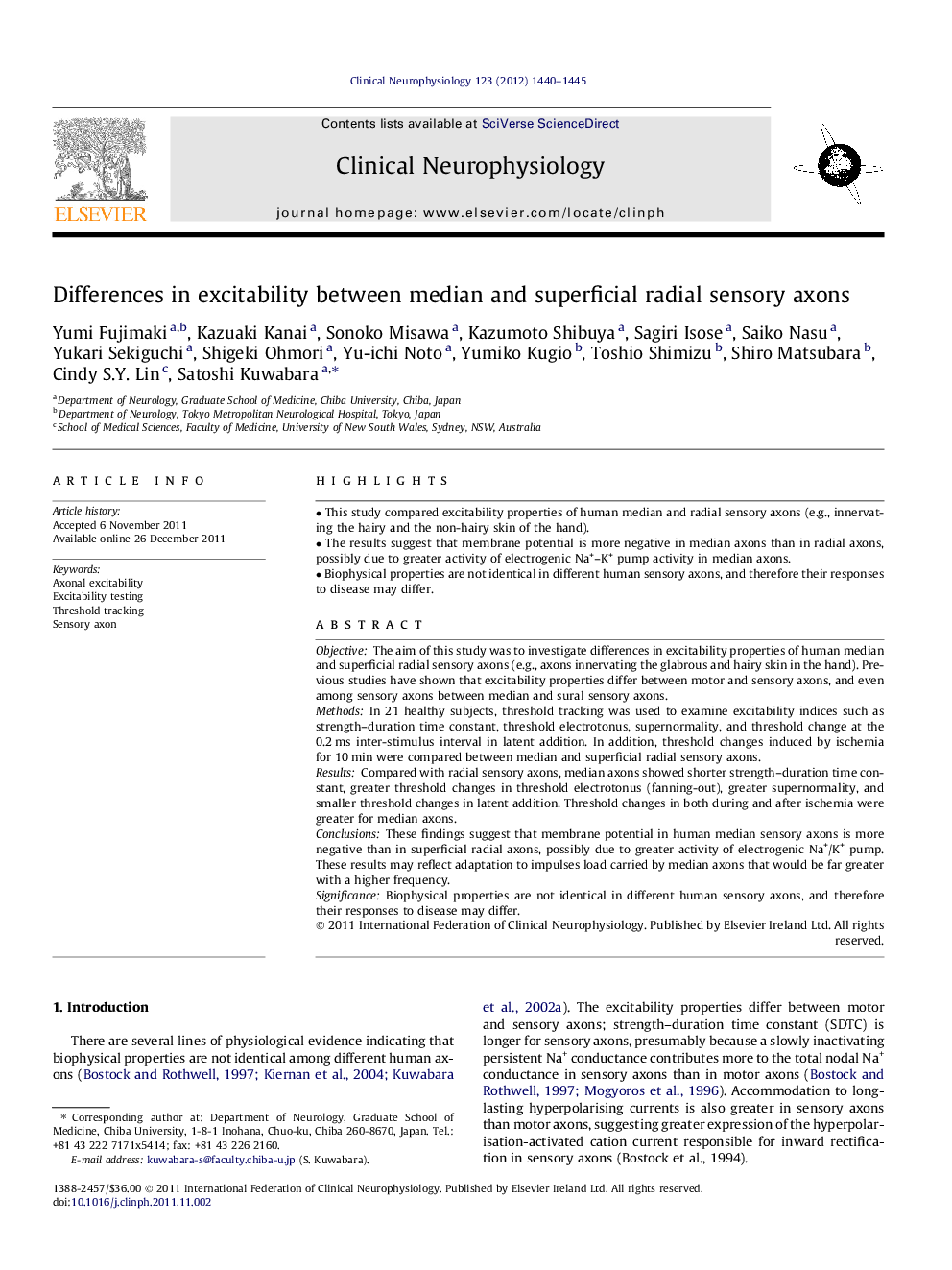| Article ID | Journal | Published Year | Pages | File Type |
|---|---|---|---|---|
| 3045509 | Clinical Neurophysiology | 2012 | 6 Pages |
ObjectiveThe aim of this study was to investigate differences in excitability properties of human median and superficial radial sensory axons (e.g., axons innervating the glabrous and hairy skin in the hand). Previous studies have shown that excitability properties differ between motor and sensory axons, and even among sensory axons between median and sural sensory axons.MethodsIn 21 healthy subjects, threshold tracking was used to examine excitability indices such as strength–duration time constant, threshold electrotonus, supernormality, and threshold change at the 0.2 ms inter-stimulus interval in latent addition. In addition, threshold changes induced by ischemia for 10 min were compared between median and superficial radial sensory axons.ResultsCompared with radial sensory axons, median axons showed shorter strength–duration time constant, greater threshold changes in threshold electrotonus (fanning-out), greater supernormality, and smaller threshold changes in latent addition. Threshold changes in both during and after ischemia were greater for median axons.ConclusionsThese findings suggest that membrane potential in human median sensory axons is more negative than in superficial radial axons, possibly due to greater activity of electrogenic Na+/K+ pump. These results may reflect adaptation to impulses load carried by median axons that would be far greater with a higher frequency.SignificanceBiophysical properties are not identical in different human sensory axons, and therefore their responses to disease may differ.
► This study compared excitability properties of human median and radial sensory axons (e.g., innervating the hairy and the non-hairy skin of the hand). ► The results suggest that membrane potential is more negative in median axons than in radial axons, possibly due to greater activity of electrogenic Na+–K+ pump activity in median axons. ► Biophysical properties are not identical in different human sensory axons, and therefore their responses to disease may differ.
